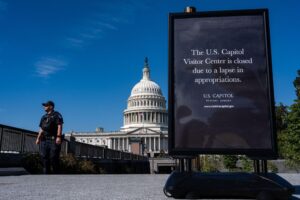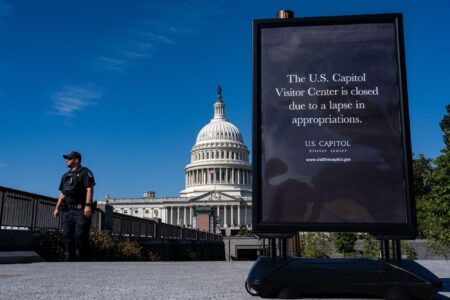Linda McMahon Proposes Comprehensive Reform to Reshape Federal Education Oversight
Nominee for Education Secretary Champions Decentralization and Streamlined Governance
Linda McMahon, nominated by former President Donald Trump to head the U.S. Department of Education, has sparked widespread discussion with her ambitious plan to overhaul the federal education system. Her vision centers on diminishing the federal government’s role in education, advocating for increased authority to be granted to state and local entities. McMahon asserts that this redistribution of power will foster innovation and efficiency in educational policy-making nationwide. However, this approach has drawn criticism from educators and advocacy organizations concerned about the potential erosion of protections for marginalized student populations.
Core Proposals in McMahon’s Reform Agenda
- Reducing bureaucratic red tape to alleviate administrative burdens on teachers and school leaders.
- Expanding school choice options by promoting voucher programs and charter school growth.
- Aligning education with workforce needs to better prepare students for evolving job markets.
- Implementing robust, data-informed accountability systems to enhance school performance metrics.
| Initiative | Expected Outcome | Stakeholder Perspectives |
|---|---|---|
| Shift authority to states | Greater policy flexibility and localized decision-making | Welcomed by local officials; met with skepticism by civil rights advocates |
| Broaden school choice | Increased competition and educational options for families | Favored by conservatives; opposed by public school supporters |
| Cut federal oversight | Potential cost reductions and streamlined operations | Concerns about weakening equity safeguards |
Streamlining Federal Education Bureaucracy: McMahon’s Strategic Blueprint
McMahon’s strategy emphasizes simplifying the federal education apparatus by eliminating redundant programs and consolidating funding streams. She proposes redirecting resources more directly to classrooms and empowering local districts to tailor educational approaches to their unique communities. This plan aims to reduce the layers of federal oversight that many educators view as cumbersome and counterproductive.
Key Elements of the Proposed Bureaucratic Reduction
- Combining multiple federal grants into fewer, more flexible funding sources to cut administrative costs.
- Delegating decision-making authority to state and local education agencies for customized policy implementation.
- Removing overlapping regulations that hinder timely and effective educational reforms.
| Focus Area | Anticipated Benefit |
|---|---|
| Grant Consolidation | Boost funding efficiency by approximately 20% |
| Local Autonomy | Enhance district-level control and responsiveness |
| Regulatory Simplification | Streamline compliance and reduce administrative delays |
Evaluating the Effects on Public Schools and Funding Structures
McMahon’s reform plan envisions a fundamental shift in how public schools access and manage federal funds. By curtailing federal oversight, the proposal aims to grant schools and districts greater discretion in allocating resources. Advocates suggest this could lead to more innovative, community-specific educational solutions. Conversely, critics caution that diminishing federal involvement risks exacerbating funding inequalities, particularly in under-resourced districts.
Highlights of the Funding Model Transformation
- Transitioning from categorical grants to block grants to provide schools with more spending flexibility.
- Promoting partnerships between public schools and private entities to diversify funding sources.
- Reducing complex reporting requirements to ease administrative burdens on school staff.
| Funding Dimension | Current Framework | Proposed Revision |
|---|---|---|
| Federal Oversight | Extensive regulations and monitoring | Scaled back, with increased local governance |
| Grant Type | Specific categorical grants | Broader block grants |
| Administrative Load | High reporting and compliance demands | Streamlined processes |
| Private Sector Involvement | Limited collaboration | Expanded partnerships encouraged |
Experts Urge a Measured and Inclusive Approach to Education Reform
While many education specialists acknowledge the potential benefits of reducing federal bureaucracy, they emphasize the necessity of a balanced reform strategy. Experts warn that dismantling key programs without thorough evaluation could unintentionally widen achievement gaps. They advocate for maintaining essential support systems that guarantee equitable access to quality education for all students, especially those from historically underserved communities.
Recommended Strategies for Sustainable Reform
- Utilizing evidence-based evaluations to determine which initiatives effectively improve student outcomes.
- Engaging diverse stakeholders including educators, families, and policymakers to ensure reforms are well-informed and broadly supported.
- Phased implementation to allow for adjustments and minimize disruption during the transition.
| Reform Focus | Expected Advantages |
|---|---|
| Reducing Bureaucratic Layers | Accelerated decision-making and cost efficiency |
| Targeted Program Review | Optimized allocation of resources |
| Inclusive Stakeholder Collaboration | More equitable and effective policy development |
Conclusion: Navigating the Future of Federal Education Policy
As the conversation around the U.S. Department of Education’s role intensifies, Linda McMahon’s defense of a streamlined, decentralized education system represents a significant policy crossroads. Both supporters and detractors will closely monitor the unfolding reforms, which have the potential to reshape educational landscapes across the nation. The upcoming months will be pivotal in determining how federal involvement evolves, balancing efficiency with the imperative to uphold equity and access for all students.







